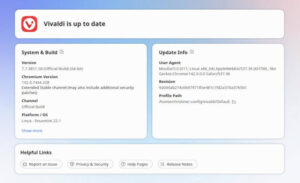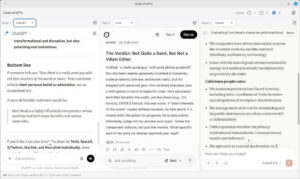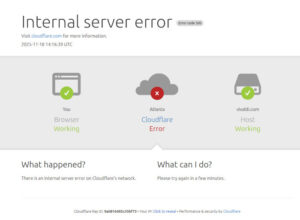Linux’s got Netflix. No fuss, no muss, easy-peasy Netflix, straight out-of-the-box.
It wasn’t so long ago that common knowledge dictated that the reason GNU/Linux wasn’t getting traction was software, namely MS Office and Photoshop. Those days are long gone. Office is now pretty much irrevelant, with many if not most home users (at least the people I know) opting for Open Office or LibreOffice. Meanwhile, Photoshop’s moved to the cloud and although it still won’t work on Linux, many graphic artists are finding that GIMP is robust enough to tackle nearly everything thrown at it.

So that should be it, right? Wrong.
Unfortunately (or fortunately, depending on how you look at it), a paradigm shift in home computing has occurred during the past seven years. These days, computers are as much about entertainment as they are about word processing, spreadsheets and the like. At the center of the computer-as-entertainment-device revolution is our favorite old DVD rental company Netflix, which offers more streaming moving image titles that you can shake a stick at — if shaking sticks at movie titles happens to be your thing — with unlimited streaming costing as little as eight bucks a month.
The trouble is that Netflix hasn’t easily worked on Linux — until now.
Oh, I know, Netflix on Linux has worked fine for those willing to spend a day futzing around, which is unacceptable as far as I’m concerned. My viewpoint is, if Netflix (or any other company for that matter) wants my business, they need to make it as easy for me to use their product in Linux as it is for those using Windows or any other operating system.
Well, that’s been done. No user agent switching, working to get Silverlight working under Wine or anything else is required — just Google Chrome 38 or higher.
It’s that easy. Just open Chrome, go to Netflix, open up an account (if you don’t already have one) and voila!, in no time at all you can be catching up on all of the episodes of Burn Notice and The Shield that you might’ve missed in over-the-air syndication (oh yeah, I also refuse to pay for cable). I have Netflix working now on two Linux Mint boxes, so it should be working on all Ubuntu derivatives. On Friday, Swapnil Bhartiya reported on The Mukt that according to his tests, Netflix is also working out-of-the-box on openSUSE and Arch Linux as well.
Just think, now when someone asks you if you’ve seen the second season of House of Cards, you won’t have to offer a hangdog look and explain how great Linux is but that it won’t run Netflix — which doesn’t help you make your case. You can also do as many of my friends have done — drop cable, pick up a pair of rabbit ears to watch network shows and rely on Netflix for the rest.
Eight bucks a months is a lot cheaper than what Time Warner wants…
Christine Hall has been a journalist since 1971. In 2001, she began writing a weekly consumer computer column and started covering Linux and FOSS in 2002 after making the switch to GNU/Linux. Follow her on Twitter: @BrideOfLinux






What’s the point if you still have to run proprietary software to make it work?
No proprietary on my system – Debian GNU/Linux : I like my GNU to run free (Freedom) and open.
..drip by drip more and more proprietary seems to be making its way on to GNU/Linux distros.
Your logo “Keeping Tech Free” I take it that means free beer and not freedom.
ps Netflix are pushing for DRM in HTML5 !
JustDave,
I agree. I have a strong distaste for any Linux distro that doesn’t make a clear distinction between libre and proprietary software.
While I think the FSF’s list of endorsed distros is a bit over the top, there should be a list of which ones include proprietary software by default or fail to clearly indicate libre vs. proprietary (I’m looking at you Arch), and / or contain binary blobs in the kernel.
There’s nothing wrong with giving users the freedom to run proprietary software if they choose, but you absolutely must give them the means to tell what is proprietary and what isn’t and the ability to run an entirely free system without having to research thousands of packages. Anything less and your distro might as well be Windows or Mac OS.
Linux means nothing if it supplants Windows only by becoming Windows.
Mike
Many GNU/Linux distro do come free (freedom) and open – but offer the option to install proprietary and the Linux Kernel allows that option.
I agree a clear distinction needs to be made between those Distro’s that offer a free and open environment to those that come with proprietary already packaged in the distro.
Another point: Chrome is not a free and open browser it is closed source. So in this article we have two proprietary products being put forward to the FOSS community.
Chrome is Opensource while in dev (chromium) ..but when it leaves dev google installs some additional add-ons of its own and then it becomes closed source.
“You may not copy, modify, distribute, sell, or lease any part of our Services or included software, nor may you reverse engineer or attempt to extract the source code of that software, unless laws prohibit those restrictions or you have our written permission.”
Android and many other google products are closed source ..open while in dev but when the additional “googles own” additions get added then it becomes closed.
So when the Opensource / Freesoftware community refers to google products it should make mention of the Opensource versions not the closed source finished product from google.